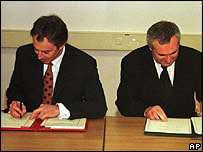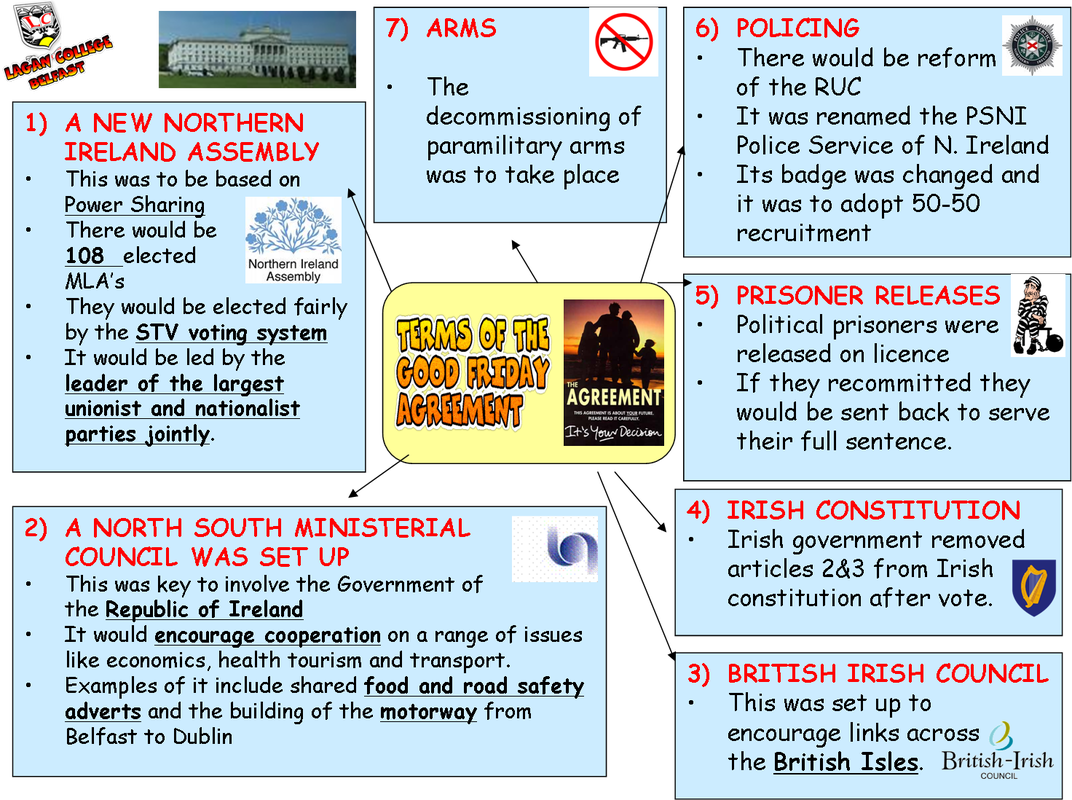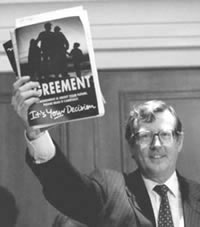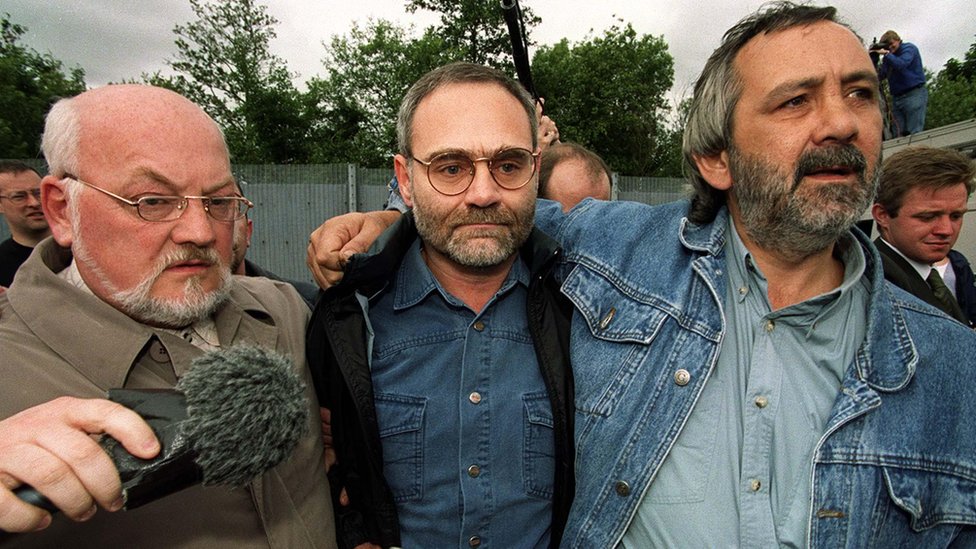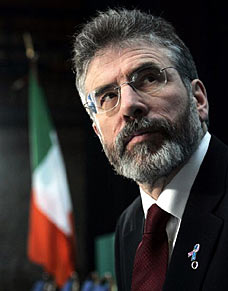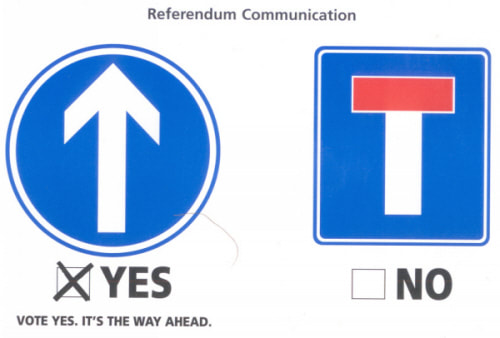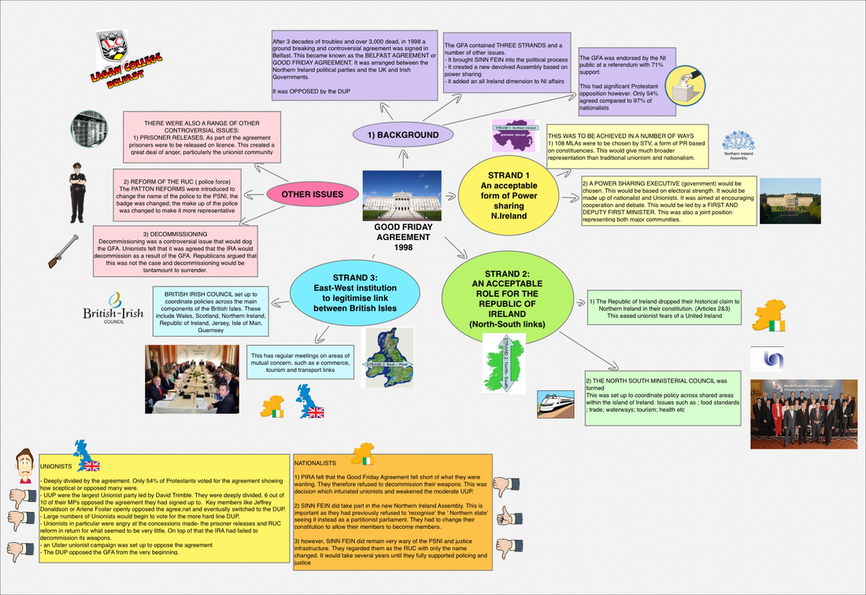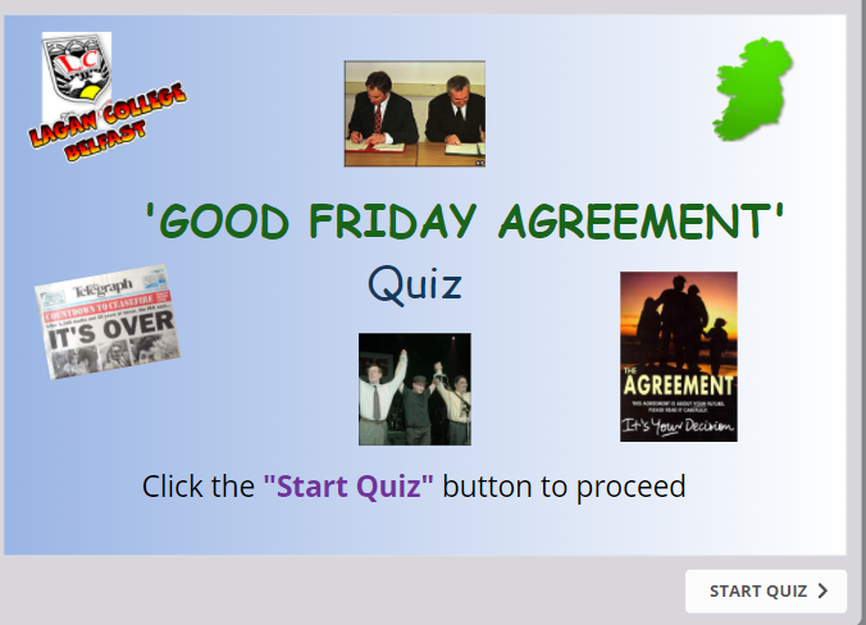The Good Friday or Belfast Agreement was signed at Easter 1998 and marked a new way forward for Northern Ireland politically. It was a controversial deal and is still being fought over today. It did however, bring the intense 3 decade conflict to an end and paved a political way forward for Northern Ireland based on the principles of power sharing.
The Agreement was signed by the main Northern Ireland political parties. including the SDLP, Sinn Fein, UUP and Alliance party. The one group who clearly did not agree was the DUP who opposed the Agreement as a 'sell out'. They still took their seats in the Northern Ireland Assembly but they were determined to bring it down from within.
The Agreement was signed by the main Northern Ireland political parties. including the SDLP, Sinn Fein, UUP and Alliance party. The one group who clearly did not agree was the DUP who opposed the Agreement as a 'sell out'. They still took their seats in the Northern Ireland Assembly but they were determined to bring it down from within.
|
The Good Friday agreement was to fulfill THREE STRANDS:
|
|
|
|
WHAT WERE THE RESULTS?
- 71% of those in Northern Ireland voted in favour of the Good Friday Agreement. 97% of nationalists voted in favour; Unionist support was only about 54%
- In the Republic of Ireland nearly 95% voted in favour of the Agreement and constitutional changes.
|
|
|
© J Wishart / Rita Morgan 2019


